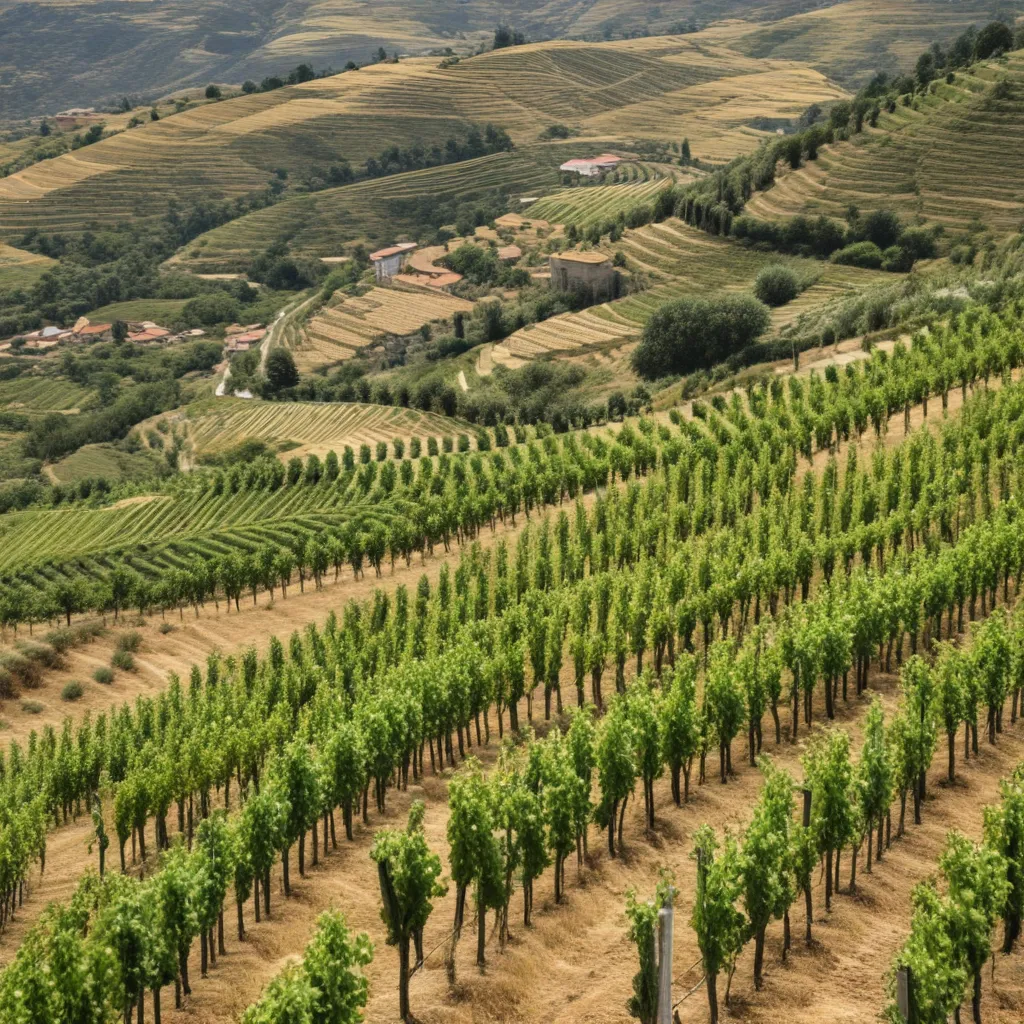
The Douro region in northeastern Portugal is renowned for its exceptional wines, deeply rooted in the area’s unique terroir. This ancient wine-producing area, the world’s oldest demarcated wine region, offers a diverse tapestry of microclimates, soil compositions, and grape varieties that collectively shape the distinct characteristics of Douro wines. As we delve into the influence of terroir on these esteemed white and red wines, we uncover a captivating story of how nature and human craft converge to create true expressions of this singular wine region.
Douro’s Viticultural Tapestry
The Douro region is characterized by a rugged, steep-sloped landscape carved by the winding Douro River. This harsh yet enchanting terrain, with its hot summers, harsh winters, and diverse soil types, provides the foundation for Douro’s viticultural prowess. The two primary sub-regions, Baixo Corgo and Douro Superior, each showcase unique microclimatic and geological qualities that contribute to the diversity of Douro wines.
Baixo Corgo, the westernmost sub-region, benefits from a milder climate with lower heat and radiation levels, as well as a more balanced precipitation pattern. In contrast, Douro Superior, to the east, experiences more extreme conditions, including higher temperatures, greater solar radiation, and a more pronounced precipitation deficit. These climatic distinctions, coupled with variations in soil composition, imbue the wines from each sub-region with their own captivating signatures.
The Douro’s traditional grape varieties, such as Touriga Nacional, Touriga Franca, Tinta Roriz, and Tinta Barroca, are deeply attuned to the region’s terroir, thriving in the unique growing conditions. White wine grapes, including Rabigato, Viosinho, Gouveio, and Malvasia Fina, also find their ideal home in the Douro, producing wines that are equally expressive of their origins.
Terroir’s Imprint on Douro White Wines
Douro white wines, with their slightly acidic pH range and moderate alcohol content, showcase a remarkable sensitivity to the region’s terroir. Wines from the Baixo Corgo sub-region tend to exhibit more pronounced aromatic profiles, often featuring notes of wood, spices, apple, and a pleasing persistence on the palate. These characteristics are likely influenced by the sub-region’s milder climate and more balanced precipitation patterns, which can foster the development of a richer array of aromatic compounds.
In contrast, white wines from the Douro Superior sub-region often present a more delicate, yet vibrant, expression. These wines typically exhibit a heightened fruitiness, with tropical and citrus notes complementing the floral and fresh attributes. The higher heat and radiation levels in Douro Superior, as well as the more pronounced precipitation deficit, may contribute to the concentration and balance of these aromatic compounds.
Interestingly, the acidity levels in Douro white wines also reflect the influence of terroir. Wines from the Douro Superior sub-region tend to display a slightly lower pH, contributing to a more refreshing and vibrant mouthfeel. This subtle difference in acidity may be linked to the unique soil compositions and climatic conditions prevailing in each sub-region.
Terroir’s Shaping of Douro Red Wines
The terroir of the Douro region also leaves an indelible mark on the region’s acclaimed red wines. Wines from the Baixo Corgo sub-region often display a more complex and nuanced profile, with a harmonious interplay of woody, ripe, and red fruit notes, balanced by pronounced tannins and acidity.
This robust and multifaceted character may be attributed to the sub-region’s milder climate, which can foster the development of a wider array of aromatic and phenolic compounds in the grapes. The more balanced precipitation patterns in Baixo Corgo may also contribute to the wines’ overall structure and mouthfeel.
In contrast, red wines from the Douro Superior sub-region tend to exhibit a slightly more restrained and focused expression. These wines often showcase a pronounced tannin structure, along with prominent red and ripe fruit characteristics. The harsher growing conditions in Douro Superior, with its higher temperatures and more pronounced precipitation deficit, may contribute to the concentration and integration of these key attributes.
Interestingly, some red wine samples from the Douro region, regardless of sub-region, have displayed a similarity in their aromatic profiles, suggesting that factors beyond terroir, such as winemaking techniques and grape blending, may also play a significant role in shaping the final character of these wines.
Sustainable Stewardship of Douro’s Terroir
As we explore the nuanced interplay between terroir and Douro wines, it becomes clear that the region’s long-term viability and the preservation of its distinctive character hinge on sustainable viticultural practices. Embracing organic and biodynamic farming methods, Douro’s winegrowers are actively nurturing the health and resilience of their soils, ensuring that the region’s precious terroir can continue to thrive in the face of evolving climatic conditions.
Moreover, the Douro region’s deeply rooted wine culture has fostered a strong commitment to biodiversity conservation, with many producers actively promoting the coexistence of vineyards and diverse ecosystems. By safeguarding the delicate balance of the Douro’s natural environment, these winegrowers are securing the foundation for continued excellence in wine production, while also contributing to the region’s long-term sustainability.
As the Douro region navigates the challenges posed by climate change, its winemakers are adopting innovative strategies to adapt and preserve the unique characteristics of their terroir. From exploring drought-resistant grape varieties to implementing precision viticulture techniques, these stewards of the land are ensuring that the Douro’s legacy of exceptional wines will continue to captivate wine enthusiasts for generations to come.
The Douro region’s rich tapestry of terroir, woven through the diverse microclimates, soil compositions, and grape varieties, is a testament to the intricate relationship between nature and human craft. By delving into the influence of terroir on Douro’s white and red wines, we uncover a captivating narrative of balance, complexity, and a profound respect for the land that gives birth to these remarkable wines. As we raise a glass to the Douro, we celebrate the triumph of this singular region’s terroir, and the unwavering dedication of its winegrowers to preserving its viticultural legacy for future generations.
